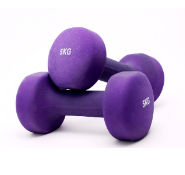
We all want to make more money. And how do we normally try to make that happen? By selling more products, through the acquisition of more customers.
That said, you might be overlooking hidden profit centers, in your existing businesses, that could potentially add on tens of thousands of dollars to your bottom line.
In this article, we share 5 tips for how you can increase your revenue, and profit margins, in your import business.
1. Find new sales channels
As a business is established, the Entrepreneur tends to have a specific sales channel in mind. When it comes to our customers, we see that it’s more common that people born in the 50s and 60s, tend to be more focused on traditional sales channels, such as retailers.
The younger Entrepreneurs we work with are, almost without exception, exclusively focused on eCommerce.
However, these two approaches are not mutually exclusive.
My experience is that companies that only focus on eCommerce, underestimate the potential for selling their product to established retailers – while overestimating the difficulty of selling to these businesses.
Retailers need products to sell, and perhaps you are only a phone call away from a new, big, customer.
The same thing can also be said about businesses that see eCommerce as overly complicated, expensive or not even relevant to their business.
While success in the eCommerce space rarely comes overnight, I have seen countless of customers slowly grow it into their main sales channel.
Today, eCommerce is neither complicated nor expensive, thanks to platforms like WooCommerce, Tictail and Shopify.
The market wants your product, so go out there and reach the customers you don’t serve today.
2. Brand your product, to increase its perceived value
A branded product is always more valuable than a ‘no-name product’. In the eyes of your customer, it adds value to the product – while it slowly creates an incredibly valuable IP to your business.
Besides, when importing from China, there is no reason why you should not get your product branded.
First, branding can be made very simple. Any supplier can print a logo on a private label product.
It doesn’t really cost anything either. A logo print doesn’t set you back more than 20 to 30 cents, in most cases.
That being said, you need to provide the supplier with clear instructions when branding a product – including the following:
a. Logo file (.ai or .eps)
b. Font file
c. Color/s (Pantone)
d. Print type (i.e., Screen Print or Engraving)
e. Dimensions (i.e., 18 x 45 mm)
f. Print position
In addition, most suppliers can also offer a selection of standard packaging designs, that also can be branded with your logo.
You’ll definitely thank yourself (and me) in a couple years when you sell your business, which main asset is the brand, for a few million dollars.
3. Upgrade materials and parts, and raise your prices
Many businesses charge way too little for their products. Way back when I was also in eCommerce, I made this mistake for years.
Pricing is the key to success in every business, and even more so for eCommerce businesses, that must budget for online PPC (Pay Per Click) advertising and affiliate commission, to stay ahead of the competitors.
Charge too little, and you can’t afford to advertise your products.
Charge too much, and, well, your customers go elsewhere.
It’s all in the price tag. But jacking up the price might not be such a good idea, unless you have reason to do so.
And this is where upgraded and materials and parts come into play.
A small investment in product quality, can result in a disproportionate value increase. Sounds abstract? Let me show you what it might look like:
| Specification | Zinc Alloy Watch | 316L SS Watch |
| Case Material | Zinc Alloy | 316L Stainless Steel (+$9) |
| Movement | No name | Miyota 1L22 (+$1.2) |
| Strap | PU Leather | Calf Leather (+$1.3) |
| Factory Price | US$7.5 | US$19.0 (+$11.5) |
| – Cost Difference | +253% | |
| Est. Retail Price | US$49 | US$249 |
| – Price Difference | +510% | |
In this example, an increase in the factory price of $11.5, results in a potential profit margin increase of $200.
This may be an extreme example, but the principle applies to many products.
A better fabric or even packaging can make a customer willing to pay far more for a product.
Done the right way, an upgrade in materials and components can transform your business completely. In the right way.
However, this requires a lot of market research, and an understanding of the materials and components available on the market.
Manufacturers are rarely keen on educating buyers on what they can offer, so you must do your homework before you reach out to suppliers.
4. Implement a quality assurance strategy to reduce the number of defective products
In mass production, it’s not a matter of ‘if’ there will be quality issues, but how many, and how severe.
Ideally, the minor defect rate is below 1%, without any major or critical defects whatsoever.
In a worst case scenario, the defect rate could be above 50%.
As an Importer, it is your responsibility to ensure that the number of defective units is kept at a minimum, which requires the implementation of a strict Quality Assurance process.
Before I explain what a QA process might look like, I’ll show you how a 20% defect rate can impact your bottom line:
| Factors | Company A | Company B |
| Factory price | $10 | $10 |
| Quantity | 1000 pcs | 1000 pcs |
| Defect rate | 0.5% | 20% |
| Defect quantity | 5 pcs | 200 pcs |
| Unit price (De facto) | $10.05 | $12.5 (+19%) |
As seen in the example above, the lack of a QA process can add on an additional 10 to 20% to the actual unit price.
Luckily, implementing a Quality Assurance procedure can be really simple.
Below follows a basic QA process that be applied to essentially any industry:
General Quality Assurance Process
| Phase | QA Process |
| A. Before production | 1. Draft sales contract, with product specifications, quality requirements and payment terms that ties the balance payment to the quality control result 2. Inform the supplier of upcoming quality controls, and how it affects the balance payment 3. Write down your definition of a defective product (i.e., any product with scratches or marks) and inform your supplier |
| B. During production | 1. Book quality control and create checklist 2. Book lab testing (if necessary) 3. Execute quality control according to the checklist 4. Pay or withhold the balance payment (depending on the result) |
Quality Assurance ultimately comes down to preventing quality issues, before they happen. Hence, the emphasis on making the supplier know your quality requirements, and that you will not pay until you’ve verified that the products are made accordingly.
An incredibly simple and efficient way to add on a few thousand dollars to your bottom line.
5. Prevent delays, and avoid lost sales
Delayed shipments can be a real profit killer. Especially in the time around Christmas.
Every year, I get emails from desperate Importers, stunned that their late October order didn’t make it in time for the holiday sales.
Unfortunately, I have no tricks to share on this one, other than that you simply need to include the risk of delays in your calculation.
At the latest, you should place your order 4 months before a hard deadline, and consider offering the supplier a small bonus ($300 to $500) if they complete the production on time, and below the stipulated defect rate.
A small incentive can do wonders for your balance sheet, and your sleep.




















